|
|
PMCC - Magazine 327 Friday 1st July 2022 |
|
Uncovering our past to preserve for the future
|
|
PMCC - Magazine 327 Friday 1st July 2022 |
|
|
Editor - Norman Woollons |
|
James Treversh - Design |
|
Click on article title |
Editorial | East Riding of Yorkshire Constabulary | ||
| What medal is this | ||||
| Police Pillars and Boxes Group |


|
The Air Beat We're late! |
|
This has been a bit of a 'post horn gallop' to get the magazine ready for publication. Sadly
Jim is still recovering from his surgery and I am sure than on behalf
of all the members, we wish him well with what is a slow and painful
recovery from surgery. It has not been without complications,
which have taken a toll on his health.
I also have a "day job", which means that I don't have unlimited time to sit and write, much as I would really, REALLY like to.
I did tell a friend recently that I was fed up of waking every morning and thinking of the list of jobs I had to do, rather than the things I would like to do! But I know I am not on my own with that line of thought.
SO with with apologies from me and Jim, here is your latest PMCC Magzine.
This month we have several interesting pieces which centre around researching and discovering the history of items in people's collections.
Research is not difficult to do these days, but it does take time to do properly and you have to be aware of all the people and groups you can use to help you.
So without further ado and more words from me, I'll let you dive into our magazine.
Norman |
|

|
From The Hull Times, December 25th, 1920 |
Superintendent, East Riding Constabulary Retirement
Mr David Wilkinson |
|
Witty Police Poet The committee
of the Testimonial Fund to ex-Superintendent D Wilkinson entertained
him to dinner at the Green Dragon Hotel, Welton on Monday evening.
In a happy speech ex-Supt Wilkinson said :-
The men assembled here tonight
Supt. Wilkinson then went on to describe the function that night with witty prose and mentioning everyone present by name (at quite some considerable length).
The East Riding of Yorkshire Constabulary personnel records, appointment books and force orders are now lodged at the East Riding Records in Beverley. From these documents we can build a full picture of the life and career of David Wilkinson. David Wilkinson was
born on Wednesday the 2nd of April 1858 in his parents farm at Bempton,
in the north east of the county. His parents were farmers owning
a farm, quite large by standards of those long gone days.
On 2nd August 1880
he was appointed a 3rd Class Constable. He only just met the
minimum requirements being just 5’ 8½” tall. His collar number
was 56 and this is his actual first helmet. 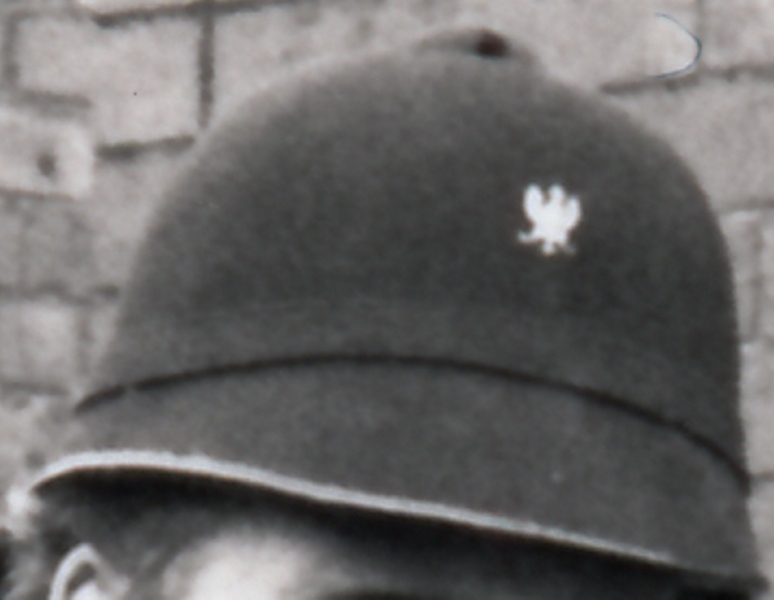 He was posted to the
North Hunsley Beacon Division, stationed First Beverley. He remained
there until the 11th of September 18S0, when he was posted to
Howdenshire Division stationed at Howden , and it was whilst serving
there, on the 15th of January l881, he was promoted to 2nd class
Constable. Whilst still serving
as the divisional Superintendent, on the 1st of July 1908 he was
promoted to Superintendent 1st Class.
Whilst it did have a cast iron house sign, with the officers number in a slider, I don't think it ever was graced by a "Blue lamp".
Superintendent
Wilkinson became the first Superintendent in the force to give up his
horse and trap for a motor car when in 1915 he purchased a Model T Ford
registration number BT1643, brand new for £125 - A huge sum in
those days. In September 1916
during First World War, David assisted in the rescue of the crew of a
'Pulham Pig' C-17 airship that crashed in the Humber off Brough.
He retired to a house in Main Street, Elloughton, and it was at this house that he died peacefully, on the 3rd of May 1938 at just over 80 years of age. |
|
<East Riding Constabulary Known Victorian badges Established 6th January 1857 |
|
Howden Police Station, Treeton Road 1880
 East Riding mounted Inspector c1895
Police cyclists at Newbald, escorting German gypsies to the Hull boundary, 1907 (The full article about the German gypsies can be found in Magazine 304)
The centenary book of the East Riding Constabulary, published 1957 and Country Coppers by Humberside Police DCC Tony Clarke
|
|
It's in the papers, somewhere |
|
On day in the 1980's, workmen were under the Crown Court in Beverley, trying to find the source of a water leak. The court is in the
old Quarter Sessions building and dates from the 18th Century.
From the dock a tunnel leads to the rear yard of what is now the police
station, but at the time the building was built, it was the local prison Photo of the Turnkey and his wife, Beverley Prison, C. 1860. Investigating the tunnel, the workmen found a small boarded up door which wasn't shown on nay plans, so they broke in to try and find the leak.
What they found was the paper archives of the East Riding Constabulary, that had been sealed up sometime around 1968.
Its existence had then been forgotten about.
Arrangements were made for the store to be emptied and everything taken to the County Archives, where there was space, and then the contents could be assessed for their value and a decision made about what should be kept and what could be destroyed.
I recovered a couple out of interest, because at the time I was a Traffic Sergeant and I also knew the officers who had investigated the incidents.. It was only later when I examined one report in particular, that I came across something interesting, and because it is dated, we can see change happening.
This report is about a fatal road crash which happened on the 31st December 1960. The cover of the accident report booklet is titled East Riding Police. But surely the East Riding was a "Constabulary up to amalgamation in 1968> Constabulary comes by Latin and is the root of the word "Constable", a very old office holder in not just the English speaking world. The 1856 Police
Act was the enabling legislation which formed police forces in counties
in England and Wales, where none were already in existence.
Almost without exception, they were called ** Constabulary. Borough and City forces which had come into existence from 1836 were "police", but it was known that a police force and a constabulary were one and the same. Move forward to the first decade of the 21st century, and those few remaining county constabularies, began to change their names to "police". It is said in part, so that people whose first language is not English, would understand what the entity did. A few forces styled themselves "Police" but still retained "Constabulary" on their badge.
The various hand written statements of evidence in this report are variously styled East Riding of Yorkshire Police and East Riding of Yorkshire Constabulary. Until the end in June 1968, the badges were all East Riding of Yorkshire Constabulary, although there is some evidence that Police was used as well.
There is no evidence in the records of the reasons for this change in styling taking place, but when I look further at papers from the late 1960's it seems "Police" is used. Very seldom can you put a date to a change when anything takes place in policing!
|
|
What would you like to see? |
|
What would you like to see in the club magazine or on the website? Don't keep it to yourself. Let Norman or Jim know and we will do our best to publish your request. |

Researching Reginald Walter QuackNatal Police |
|
The following is some research I have carried out into the life and career of Reginald Walter Quack. At the end you can find links to the various resouces I mention in the text.  Reginald Walter Quack Parents:
Queens South Africa Medal with Bars Tugela Heights and Relief of Ladysmith, awarded to Trooper Reginald Quack, Natal Police
Reginald Walter Quack was born at 19 Green Lane West Derby Lancashire on the 7th December 1874. His birth however was only registered by his mother on the 18th January 1875. His father was Emil Duack who was born on 10th June 1844 in Stuttgart in the Kingdom of Württemberg.
It appears he had his name changed some time after he emigrated to England as a wine merchant.
The
Marriage Licence for his parents issued for some reason in Chester
which is in Cheshire County note his father as being a widower aged 28.
His mother is noted as being a spinster and above the age of 21. She would have been 23 at the time.
Marriage Certificate Image from the Familysearch.org website supplied by the Cheshire Records office.
The couple were duly married at Saint Mary The Virgin Parish Church in West Derby Lancashire on the 24th February 1873.
Reginald
was their second son his elder brother Emil Aitken Quack was born on
the 6th December 1873. Aitken was his maternal grandmothers maiden
name.
He
had four other brothers Charles Fredrick Kilshaw Quack was born on 29th
September 1876, a third brother Godfried William Quack born on 17th
July 1878. His paternal grandfathers name was Willem.
His final brother Harold Henry Kilshaw Quack was born on the 18th September 1879 his maternal grandfather being Henry Kilshaw.
The
union produced a step sister Pauline Emilie Jarret Quack born on the
27th March 1885 at Toxteth Park in Liverpool likely at Greenbank House.
The family of Emil, Laura their son Harold and daughter Pauline were
still residing in Toxteth Park in the 1901 census together with four
servants.
On
the 18th November 189t Reginald was aboard the Tintagel Castle Bound
for Capetown where interestingly he is noted down as being a foreign
Merchant aged 30 and married??
Image from Researcher Rory P. Reynolds It
would appear that he plied his trade as a merchant until on the 22nd
July 1898 he was accepted as Trooper 2183 in the Natal Police at
Pietermaritzburg, having two testimonials and giving his next of kin as
his father at 22 Toxteth Road Sefton Liverpool.
All above service records provided by researcher Rory P. Reynolds
Image from the Familysearch.org website
Image from researcher Rory P. Reynolds
 Reginald left an estate in South Africa totalling £593.15/- to his father which for the times was a large amount.
Image from the Familysearch.org website  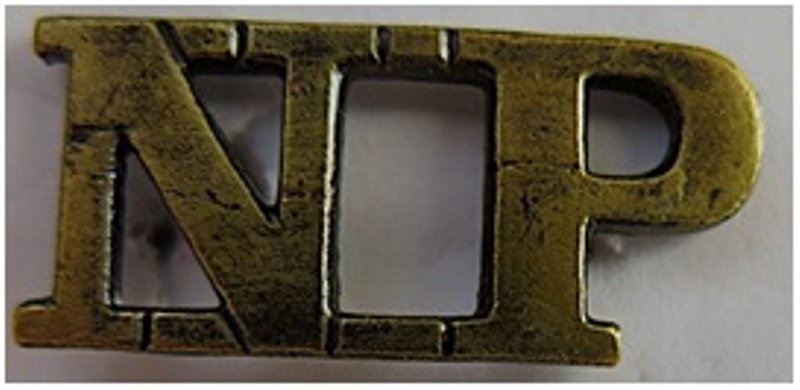 A brass button and shoulder title as worn at the time by Trooper Quack ‘Lest we forget’
Sources;  Photo of a Natal Police Trooper from "Bob" in the britishbadgeforum.com |
|
New Book |
|
Our member Alan Cook writes: Having seen the most
recent online magazine, which as ever was excellent reading, it
reminded me I should send you details of a book I have just published. Ed: You can contact Aan at alan@truncheon.org.uk , or through his website |
|
Helmet Authenticity What is historically correct and what’s not? |
|
In
our digital age it’s great to see the wealth of historical information
that has been published since the creation of the internet, that in
years past may not have been published, or if indeed had been, might
not have reached the wider audience that our digital age has made
possible.
The helmet
shows signs of wear, but for its age it is in very good condition. The
plate is secured by wooden pegs that look original and not disturbed.
There are no additional holes. A grainy photo
of them both in uniform exists. Richard wearing what appears to be a
two panel helmet with a black KC Bournemouth helmet plate . The photo
unfortunately does not show the top of the helmet clearly but it was
possibly sporting a rose top. It
got me wondering - Did the Borough change helmets for a ball top six
panel after 1952? That’s where I drew a blank. I have not been able to
verify the style of helmet worn from 1952 to amalgamation with Dorset
and Bournemouth.
On the ones I have seen, they all have large chrome or white metal side roses.
As is shown here the roses are small and black as is predominantly the case with the style of a 2 panel helmet.
The fact this helmet has small black roses peaked my interest.
Sunderland was a
close contender, but again would have had large side roses as mentioned
above. Brighton had white 6 panel summer helmets, but their blue ones
were 2 panel.
|

|
Which medal is this? |
|
Member George Barnsley wrote recently asking for help in identifying a medal ribon on an officers photo. I am trying to identify a medal in the group worn by Chief Inspector William Swanson Sutherland of Lanarkshire Constabulary. He retired from that force around 1946/47. I have identified three of the medals as L-R - WW2 Defense Medal, 1937 Coronation Medal and the last one as the King Hakon VII of Norway Freedom Cross (Thanks to member Gerard McEwan). However, the third medal I cannot identify. Can anyone identify it?
I like a challenge, and I also have a good idea of who to ask, which I need to know something. So I went to the Gentleman's Military Interest Club for help.
This is a place where members discuss medals, and if it is worth knowing, someone in this forum will tell you chaper and verse. The answer came back very quickly that the third medal is the King Christian X of Denmark's Medal, in Commemoration of the Liberation of Denmark at the end of WWII.
Also called the "Pro Dania Medal" (or the Medal of Liberty), this award was instituted on 5 May 1946 and bestowed on some 3,100 persons who had rendered special services to Denmark during the German occupation. It didn't take long to find a photograph on line to compare it with.
The obverse of the
medal depicts the head of the King, this time surrounded by the legend
"Christianus X Rex Daniae". The 3-line reverse description reads "Pro /
Dania / 1940-45".
The ribbon is red-white-red in equal parts.
I wondered what this officer was involved in during WWII to be awarded King Christian X of Denmark's Liberty Medal in Commemoration of the Liberation and King Haakon VI's of Norway Freedom Cross.
This medal was awarded to Norwegian or foreign military or civilian personnel for outstanding achievement during war. It is ranked fifth in the order of precedence in the Norwegian honours system. The reply from GMIC suggested that Chief Inspector Sutherland was in fact a member of the Glasgow City Police, so George investigated further. A check of the 1937 Coronation Medal Rolls listed him as a member of the Glasgow City Police. The Currator of the Glasgow City Police museum confirmed that William Sutherland was born in 1891 and joined Glasgow Police in 1913. Notably he was in charge of the Police Aliens Dept of Glasgow Police during WWII. He was awarded: 1946 King Christian Medal (Denmark) and the 1948 King Haakon VII Cross (Norway) for this work. The only other person to get these medals in Glasgow was the Chief Constable, Malcolm McCulloch. One interesting term I learned from this is that in Glasgow City Police at the time he was called 'Lieutenant'. This was what the rank between Inspector and Superintendent were called in this era. Finally, I now know what the Lanarkshire Constabulary officers cap badge looks like too.
|

|
Saving for the future |
|
Other than the Cyrillic languages, the work Museum is almost the same in most languages. At least the symbol of four Doric columns in brown on a white background is universal. This makes one of the very sad effects of BREXIT the way that many dealers in the, both large and small, now refuse to send anything to Europe because of the additional burden of paperwork and costs. Frequently now even when you ask a seller if they will post to Europe, you are met with a polite refusal, a rude refusal, or no answer. What book sellers have discovered is that if books are sent to Jersey, which are then forwarded to Europe, because of the unique status of the Channel Islands, it is easy and there are no costs. However I digress.... I was recently alerted to a retirement present which had appeared on eBay, given to Pc James Chilners in 1904.
I put a message up onto the PMCC Facebook group, to see if we had anyone who was a collector of either Halifax Borough Police items, or of pocket watches. A Good Samaritan and our member Steve Blake stepped in immediately and bought the watch. It had been offered with a "Buy it now" option/ A little difficult to read in the photograph, this is what the inscription on the back says, as it is shown on the back:
August 20th 1904
By 1901, the population was 107,000 and the force strength was 101 officers. However we know little about PC James Chilners or his service. A little later, one of our members who was interested in the item, because of its history and connection to the town, contacted Steve and purchased the watch for his collection. Not everyone is on-line all the time and equally, it is impossible to see all the artifacts which come up for sale on the many different web sites. so when the altruism of a member comes to the fore, to secure such an interesting historical item, it is worth mentioning. Thank you Steve! The Personnel Registers of the Halifax Borough Police are held by the West Yorkshire Archive Service in Wakefield, under reference A193-3 so it will be possible to find a little more out about PC Chilners and of course there is also the British Newspaper Archive which can be searched on-line for any reported cases involving him.
o0o
The certificate was spotted in a house clearance sale by our member Vaughan Millard, who recognised the importance of the item.
As Vaughan says "This just makes me so sad that this ended up in a house clearance and I got it for pennys on Market Place ! Did the poor chap have no family ? Well mate its now PRIDE OF PLACE in my collection ...................Anyone know the PC Tony Basil George Rum joined 4/5/59 retired 17/6/97..............
The post nominal 'RVM' refers to the Royal Victorian Medal which was instituted by Queen Victoria in 1896 and is awarded personally by the Sovereign for personal service.
It
is easy to use the London Gazette to discover that the medal (Silver)
was awarded by Her Majest the Queen, in the New Year Honours, 1993.
However where the medal (and any others) is and why the certificiate went to house clearance is not known.
These things do come up for sale and my personal view is that they SHOULD be saved... |
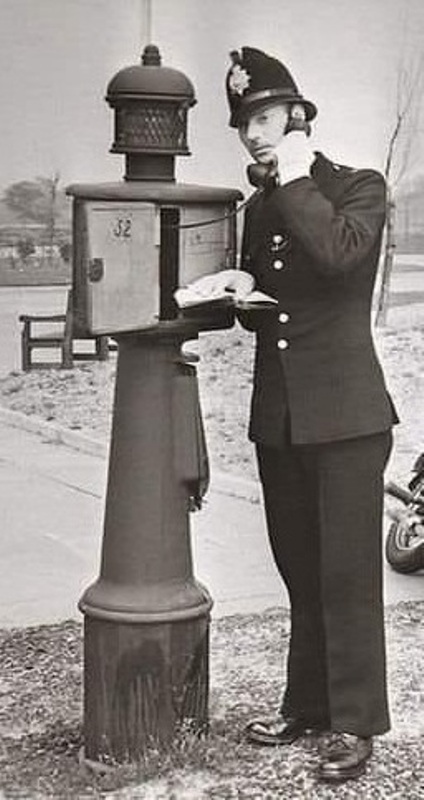
|
Police Pillars and Boxes Group |
|
Our member Jim Cassidy has posted about a very interesting information site he uses in our police boxes Facebook group,
https://www.facebook.com/groups/policepillarsandboxes
Look at the top of the photograph and there is one of the signal lights which in some locations could be found suspends above road junctions, to alert patrolling officers that they needed to go to the nearby telephone to call the station.
Learning the locations of all the pillars and cabinets was a pre-requisite for working a beat. o0o
A colleague posted this photograph of a Hull City Officer in the Pillars and Boxes group recently, asking if I had been able to identify him. The short answer is "No, not yet".
I have the original negative, so I can zoom in to very small areas of the photo, without losing definition. There is a lot of information visible, without magnifying the image. From the shop names, we can identify the exact location. The Helmet plate is a Kings Crown, which were being worn until 1953, however the plate looks like the one with the separate crown centre, which was 1935 to 1947 +/- He has a single medal ribbon, and he has an open neck tunic, so that means the photo is post 1951. 
The collar number is at an angle, so the numbers are indistinct.
There is just a single medal ribon, which I again asked the Gentleman's Military Interest Club for help with.
I knew what it wasn't, a Police Long Service Medal, besied he looks too young. If he had been on active service during WWII, there would have been several medal ribons and the GMIC replied that it was the Naval General Service Medal, because of the colours.
The Naval General
Service Medal (NGSM) was instituted in 1915 to recognise service by the
Royal Navy and Royal Marines in minor campaigns that would not
otherwise earn a specific campaign medal.
|
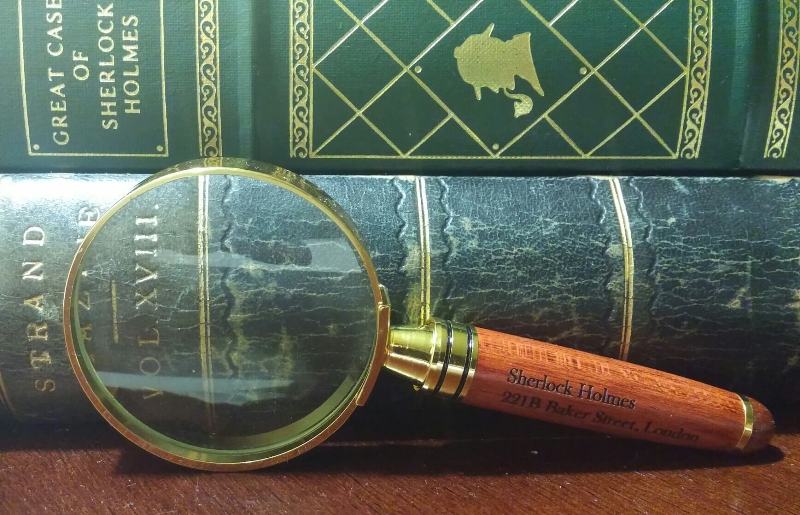
|
Researching |
|
It's
never been as easy to carry out research as it is today. However
some research requires persistance and a degree of luck.
St Dogmaels (Welsh:
Llandudoch) is a village, parish and community in Pembrokeshire, on the
estuary of the River Teifi, a mile downstream from the town of Cardigan
in neighbouring Ceredigion.
Ross is looking for more information on this very nice item.
Researching the 18th century is difficult, although not impossible. Researching the 19th century is relatively easy!
Although I am not sure where the information came from, I do not doubt its veracity.
The photograph was taken before the Hull boundaries were extended to include the village of Sutton.
There is a very active Hull photo group called "Hull, The Good Old days",
so I asked on there if anyone knew where the police houses once
were. It took just 20 minutes to get the answer; 2 - 6 Church
Street, Sutton on Hull
Sutton
on Hull, to give the village its full name, had had a resident officer
from 1856, as part of the Middle Holderness Division. The East
Riding Constabulary named their police divisions and used the
boundaries of the Petty Sessional Areas.
Middle Holderness as
a separate division in 1885, merged with South Holderness becoming
"Holderness Division", but with the Superintendent still at
Sproatley. North Holderness became part of North Hunsley Beacon.
It
was a little later in the evening when the Hull Genealogy identified a
living relative, the Great, Great Granddaughter of young Tom in
the photo , because the family names mentioned on the photograph are
all very well known in Hull. Triangulation
in research means using multiple datasets, methods, theories and/or
investigators to address a research question. It’s a research strategy
that can help you enhance the validity and credibility of your findings. So what are you
waiting for? Go ahead and try some research and if you are
struggling, then get back to us. One of our members should be
able to help.
|
![]()
|
Police Vehicles of Derbyshire By Brian Homans |
|
Today's Derbyshire Constabulary has evolved over the years by amalgamating with the former forces of Chesterfield Borough Police, Glossop Police and Derby Borough Police. Many of the photographs below where taken by me, but some were found on the internet and some were provided by John Oliver and Shaun Henderson.    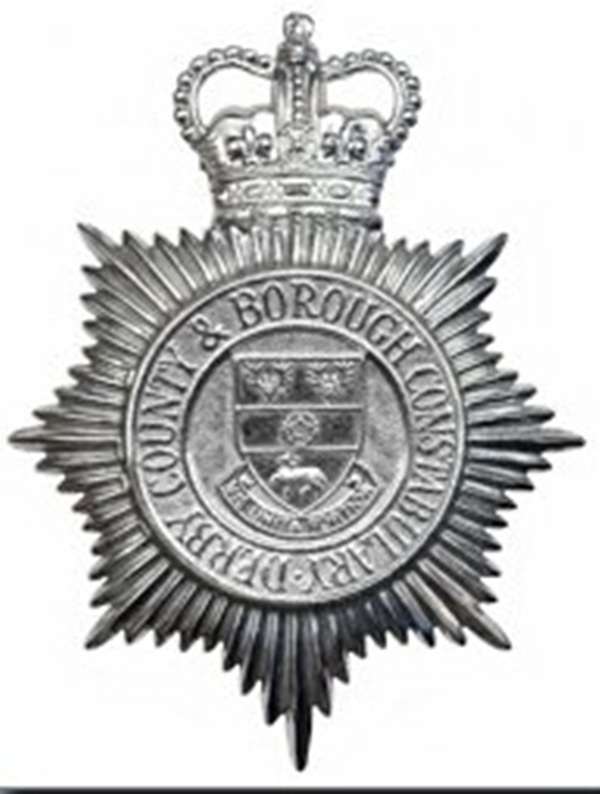 
1935 Ford and others - Chesterfield Borough
1937 Wolseley Tourer _ Chesterfield Borough
1947 Wolseleys and MG at Chesterfield
1960 Ford Zephyr with abnormal load
1966 Ford Zehyr Mk 4
1967 Morris Minor - Derby Borough
1977 Ford Granada 3000S
1978 Ford Escort.
1981 Ford Transit
1982 Range Rove
1987 Norton Interpol 2
|
|
Finishing off with some humour from Pam's postcards . . . . . .




Hover your mouse pointer over a postcard to enlarge it
|
WANTED |
|
Your news, views, stories, pictures from your collection. Any item that you think will be of interest to other collectors. |
Next PMCC Magazine: 1830hrs Friday 30th September 2022
|
|
©PMCC
➤